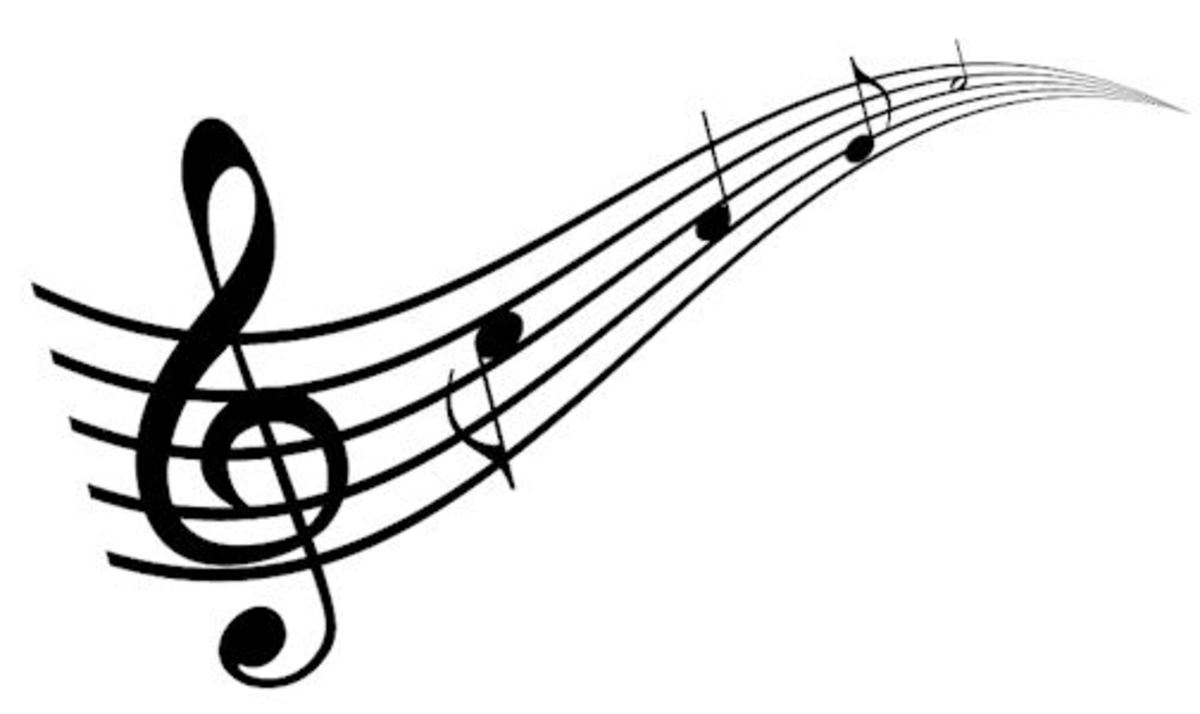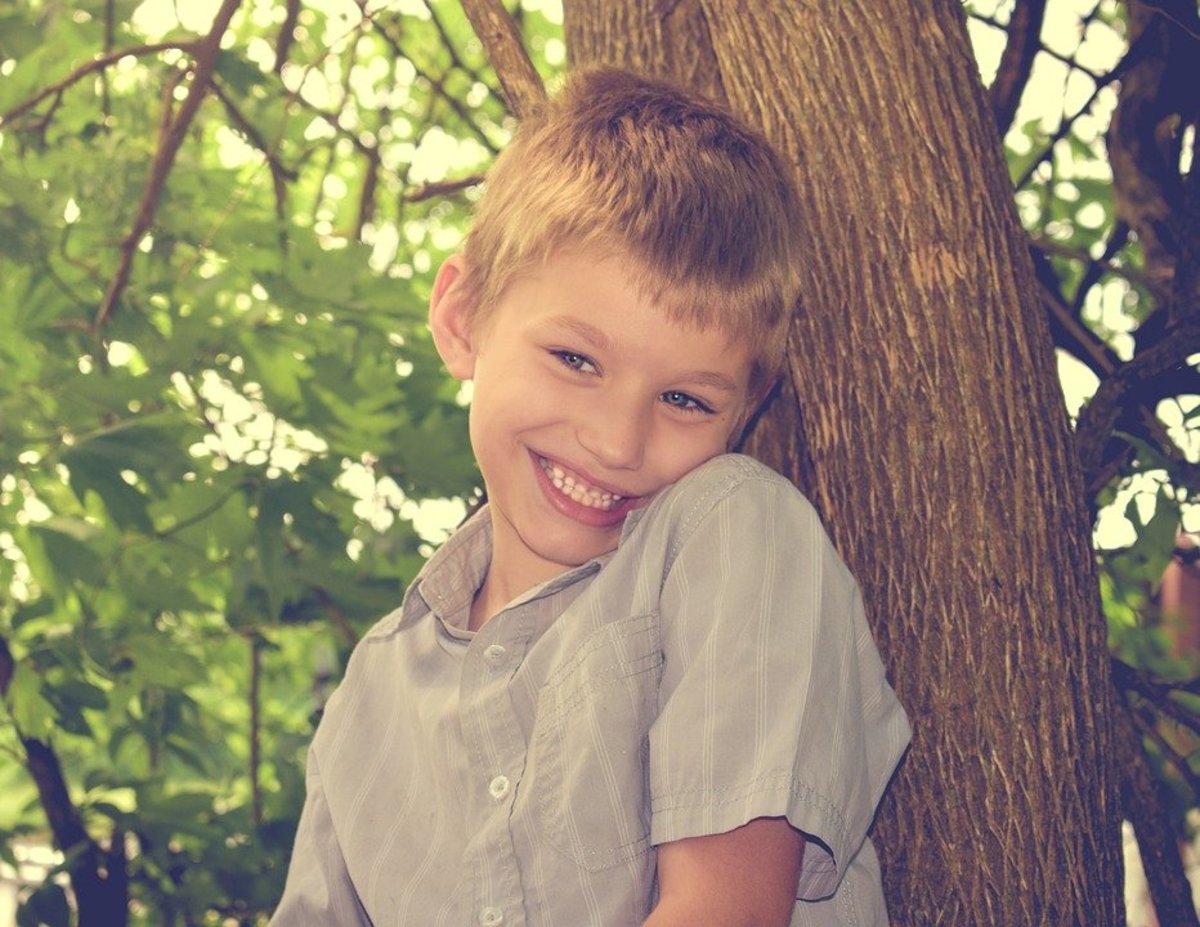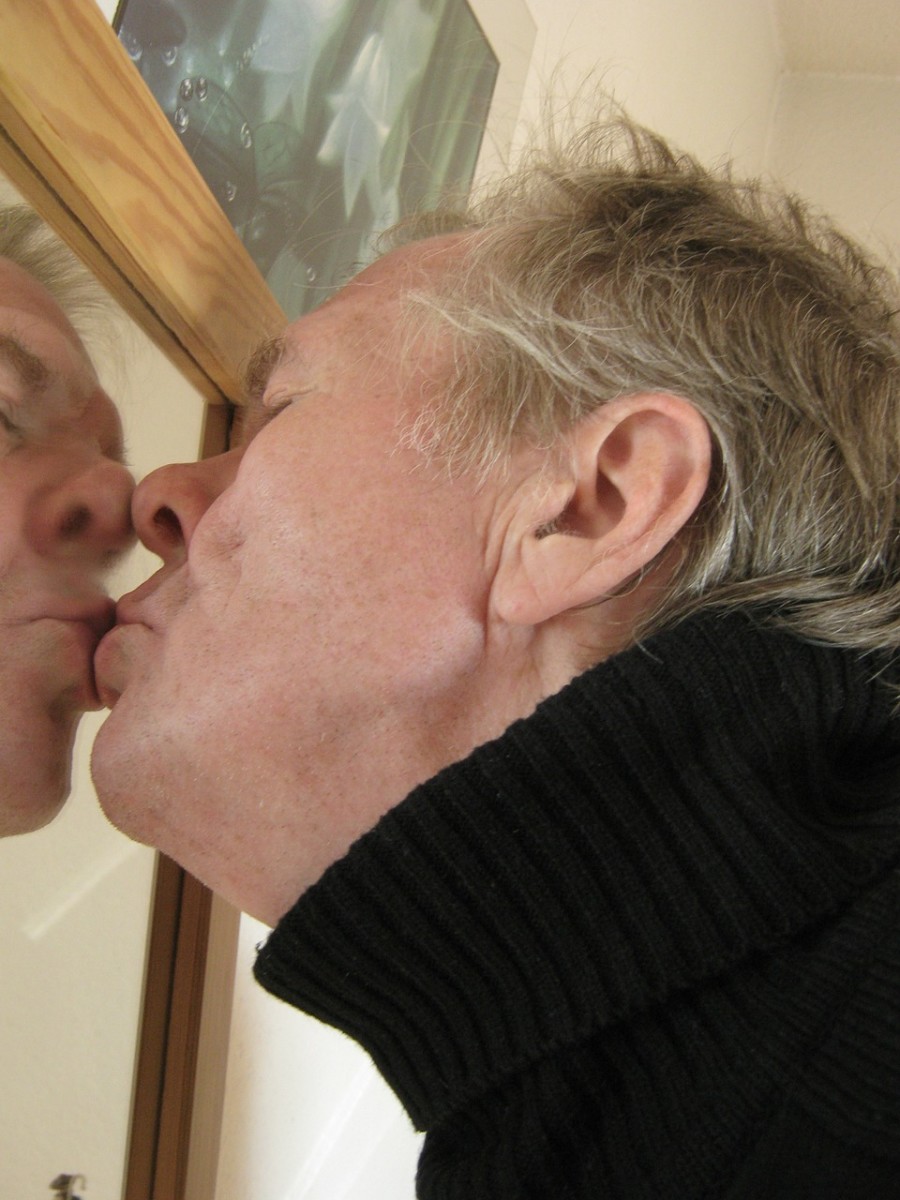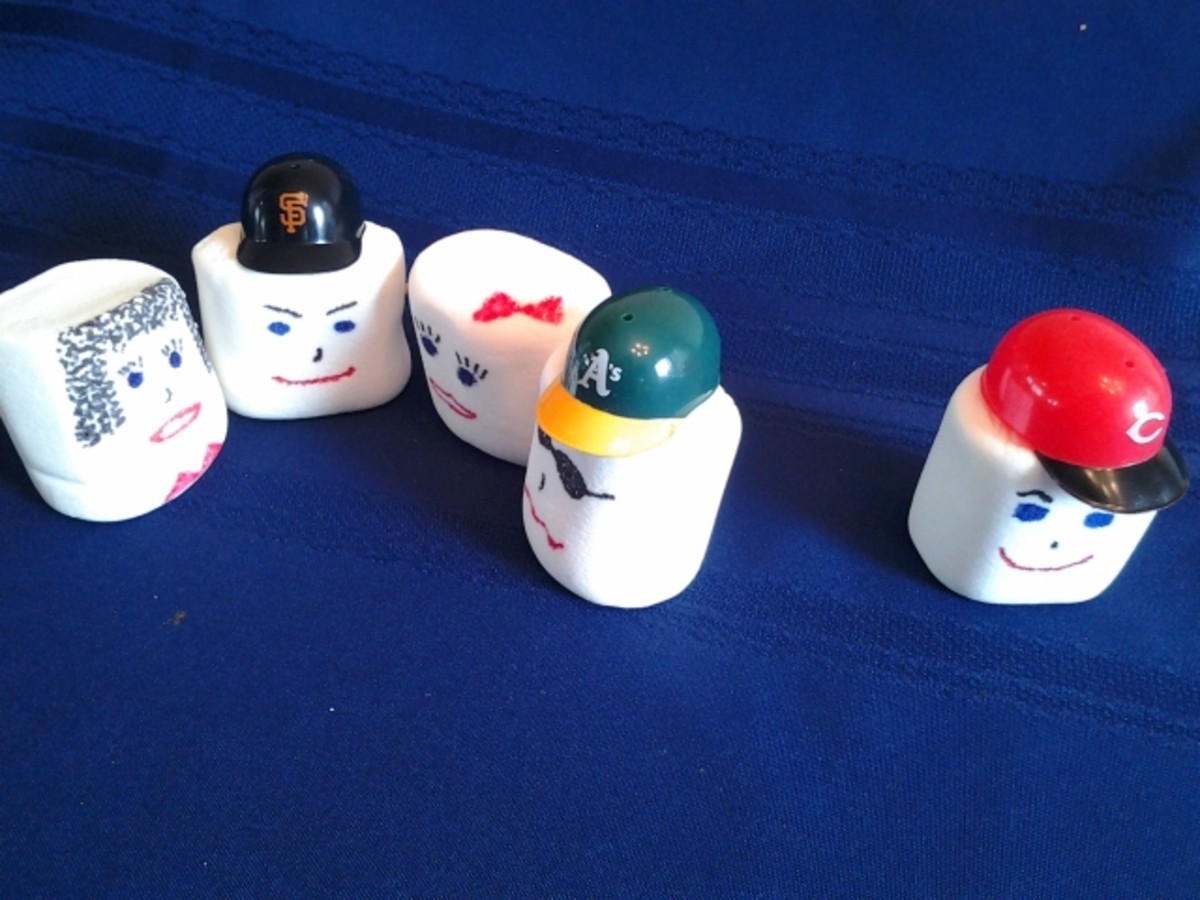Changes to the DSM-5: Autism Spectrum Disorders
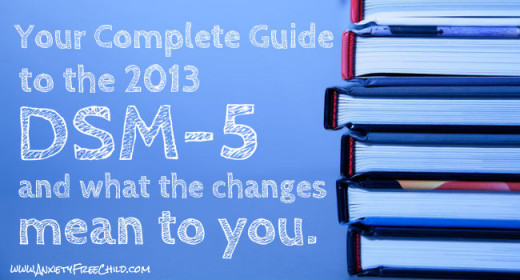
DSM-V: Changes in the definition of autism
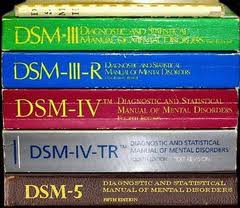
- DSM-V
Changes in diagnositc criteria from the fourth edition
Have you read the entire proposal and drafts for the changes in the DSM5 before forming a view?
Change CAN Be Good If You Give It A Chance
When the news hit that there was going to be changes to the DSM-V in regards to the diagnostic criteria for Autism Spectrum Disorders (ASD) which scared and angered parents and caregivers all over the nation. The fear is that because of the rapidly increasing rates of Autism being diagnosed over the last ten or so years, that the restrictions are going to be put in place so that it is harder for a child to be diagnosed. More rigid the criteria the less children that will be diagnosed and able to receive services. That is because no one child on the spectrum is the same. The spectrum of symptoms alone has a wide variety and the severity varies. The disorder can evolve and get better in one area over time and other symptoms will not. Children regress as well.
This is a valid concern as the process for refining the criteria is now in its preparation for final states ( if I am accurate ) as the date of the new manual is approaching. I have to admit I was worried as well because I was worried that those already diagnosed would be in danger of losing their diagnosis if the criteria was not met. Especially if they were using things like Medicaid or Social Security Benefits. They would have a right to say that the new manual is out and is more precise and want everyone re-evaluated on their program so that they can get rid of the ones that are no longer eligible.
After reading it I wanted to share some interesting aspects of the process involved and to the lengths they did go to make a responsible, fair, and justifiable decision for the sake of the kids that aren't diagnosed and still need services. I hope that its a step in the right direction for the future of Autism.
I am going to go down to my campus and take this pdf I have regarding the changes and discuss it with my professor who has worked in autism and is now an infant developmental psychologist researcher. I want to get to the nitty gritty that they don't tell us in regular media and are things that we may not recognize or have knowledge of that may impact how this change will affect us. I think its too difficult to be as specific as we want them to be because Autism is so different across categories and spectrum and in individual children and adults with the disorder. I will follow up with another hub after its complete.
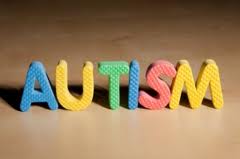
DSM-V
ASD in DSM-V - What Research Shows and Reccomendations for Changes
The questions that have arisen have been in the structure of diagnostic criteria for Autism. Especially for the DSM-V because of the proposed changes of the current criteria in DSM-IV.
The policy brief that I was reading was from June 2012, so it is relatively recent. In the brief prior to this one Autistic Advocacy Network had reviewed the brief. The intention was to highlight and address the possible ramifications and limitations of developing new criteria for ASD. This affects areas such as diagnosis, implications for services, supports and even accommodations for children and adults with the disorder. They identified a numerous amount and a variety of positive and negative implications. Also addressed was the proposed shift in the criteria and the possible outcome in terms of diagnosis.
The goal of the change is improvement in the definition itself of Autism access to the services provision. They noted what research was used and identified to make the decision to change and confirmed a huge amount of reliable and valid research support was used. The goal is to formulate criteria that includes all of the spectrum, but yet unifies the actual diagnosis.
Asperger's is only differentiated from Autism because of the absence of a language delay in the DSM-IV. This is actually not valid and PDD-NOS in the same version of DSM, is surprisingly vague diagnostic criteria and so many professionals don't even agree on what the meaning of the criteria is as its written. This creates a confusing guideline of diagnosis procedures and that is doing the child an injustice because there is a chance that the professional that is reading it and interprets it one way denies the kid but the other professional he could have gone to would have approved the diagnosis because he had a completely different interpretation of the criteria. This is a dangerous game to play as it affects the ability to access services for treatment and education. So, in this respect it makes sense to tighten it up and refine it. Make it clear and cut and dry, break it down "Barny Style" is how I would say it. Make it so there is no question but than you have to take into consideration how huge the scope of symptoms and what categories they are in as well and that would not be feasible it would seem to do if you want cut and dry criteria.
There was a consensus that this was progress from the DSM-IV.
The current changes were not to try and get the number of children diagnosed down and isn't related to trying to decrease the rate of Autism every year; it is to change it because of the massive confusion of the current criteria and what is depicted. Diagnosis of ASD currently isn't according to criteria, its more like what doctor you have and what clinic you go to and has nothing to do with criteria. I can see this because of my own experience trying to get my son diagnosed. One doctor said not autism because he was too social, another that he was social inappropriately so that he counted but he said that he had eye contacted and didn't flap his hands or arms. Another said his speech delay didn't count because even though it was a made up language after evaluation the fake language had sentence structure like English did so that he had the ability to. One wouldn't because he was developmentally normal until 15 months and didn't count it as regression but referred us to family therapy. I think you understand. Now double the problem because we also have the school to deal with who did get services for him under speech delay but refused autism educational diagnosis. No matter he dislocated a teacher's jaw, or that he ran around the halls naked and climbed into a cubby hole naked to fall asleep, they kept saying he was normal as I look down and he is biting the metal table legs. Ummm....k.
Severity Levels

Autism by the numbers: Yale researchers examine impact of new diagnostic criteria
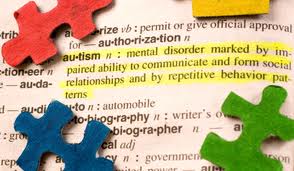
DSM-V Changes
Concerns Noted
Now that its clear as to why its necessary to make it a universal process that are looking at the necessary aspects with detailed defining characteristics; so there isn't any guessing and making the wrong choice, let's take a look at some various key issues that they spotted and addressed.
- Shifts, over time, within a category and along the spectrum of symptoms: Someone with ASD can shift from one category to another over time. This depends on the symptoms that were exhibited at any given time. So, they are removing the narrow and competing criteria.
- Sensory Issues: As any one will tell you with experience with ASD, they have a wide range of issues with sensory perception, integration and processing. They will diagnosis the ASD but like with me and my son, they had no such illness called Sensory Integration or Processing disorder and that it was made up by those affiliated with ASD. So we were instructed to just say whenever asked what his disorders are to say Infantile Autism with Sensory Issues. They have decided to now add a sub-domain of criteria because in the DSM-IV it WASN'T included. This is a positive addition.
- Adding "Late-Onset": There is a possibility that there is going to be refinement of the diagnostic criteria for adults. Addition of symptoms and traits that can be a "late-onset" of ASD in adolescence and will be adding to the description of ASD that autistic traits are highly contextual.
- Concern 1: DSM shift in social communication traits: In the DSM-IV there is a criteria for at least having 2 of 4 of the social communication traits and the DSM-V would require 3 of 3. This would potentially cause a loss of access to autism diagnosis and it would be more profound in teens and in adults as well as in women and girls.
- Social Communication Disorder: The above would also result in not enough attention to the speech and language issues of the ASD and there would be structural language problems are at the core on spectrum...it actually goes beyond just social. They discussed having a sub-domain and criteria for a new disorder that would "pick up" the children that didn't meet the other criteria. In theory I think it sounds good because its a way to keep the kids on their services and programs. They haven't decided a final decision as of June; but its pretty much down the middle.
- Concern 2: Introduction of a severity scale
- Concern3: severity scales negative impact on diagnosis
The fear is that they won't pay attention on the really important aspects of the criteria such as functional skills and they will concentrate more on the more traditional autistic traits. They will also "inadvertently" assist in making these behaviors and traits not appear to be meeting criteria and than child won't be diagnosed due to a really insignificant section. For example: Autistic kids don't make eye contact sometimes and they could coax the eye contact than when they do it they therefore don't have no eye contact met on the criteria. These traits are manipulatively same with hand flapping. So the less severe symptoms will be denied thus denying the diagnosis.
Merging Asperger’s Diagnosis into ASD May Improve Treatment and Services
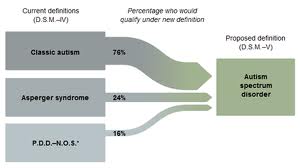
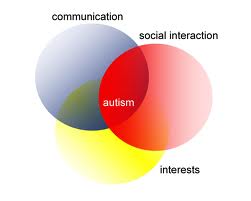
Diagnostic Criteria Change- Actual Affects
We addressed the question if the changes in criteria would affect the children that would have been diagnosed under the old criteria, be unable to now receive a diagnosis? Let's discuss some of the factors that are involved in this hype.
- Confusion in the details: The children and adults who had already been diagnosed under the 4th publication WILL NOT all of a sudden have their diagnosis yanked out from under them. Also, their state WILL NOT lose services. These were 2 frequent fears when the news of the DSM overhaul came out. The new criteria is "well-grounded" in research and is also more accurate than the one in the 4th publication.
- More difficult to get a diagnosis This was released as a factual problem in several psychiatric journals that it will make the diagnosis harder to obtain. There is a chance that it will possibly neglect those that would have otherwise been diagnosed with autism that have the less severe or milder symptoms. HOWEVER, all it will take is a few refinements and tweaks and it will be able to encompass all of the qualifying individuals that would have been deemed to have the diagnosis.
- Will not be separate categories but on a continuum: Autism Spectrum disorders include autistic disorder, Asperger's disorder, childhood disintegrate disorder, and pervasive developmental disorder not otherwise specified (PDD-NOS) and combines them into one disorder called ASD (Autism Spectrum Disorders). They will no longer go there separate category and disorder.
- Guidelines were found too strict, modified: With only a few changes they were inclusive. The only ones they are worried about are the one's that are borderline.
- The "landscape" of autism has changed: As more children were being recognized earlier with better diagnosis practices, more referrals of toddlers started. There are more referrals for older children with intellectual disabilities now too.
POSITIVE REASON'S FOR CHANGES
POSITIVE CHANGES
| REASON
| NEGATIVE
|
|---|---|---|
ASD disgnoses into a unified diagnosis is a positive development
| Expands access to service provision and showing fidelity to the reseearch literature and research supports unified diagnosis
| Takes out PDD-NOS diagnosis
|
Adds Social Communication Disorder
| Covers a majority of the people that would have been diagnosed under PDD-NOS
| |
Asperger's now under Autism
| Its only differentiated previously by a language delay and that is no longer valid according to research
| Community dissapproves
|
Doctors will no longer have issues reliably agreeing on diagnosis
| More specific criteria
| Fits certain criteria at different stages of their life
|
No longer worrying about shifting into one category or another
| All are under the same disorders of Autism Spectrum
| |
Inclusion of sensory issues
| Will add research and practice supporting autism
| |
Recognizes Autism traits may not appear until adolescence
| Provides diagnosis' too teenagers that wouldn't have otherwise
| |
Now more likely to include minority groups, socio-economic groups and women and girls
| Stricter diagnostic criteria
|
Self-injurious Behavior
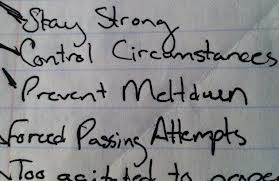
RRBs Introduced
RRB: Restricted Repetitive Behavior Examples of RRB are hand flapping, head banging, focus on parts of objects, strict routine, and preoccupation. There is an order in which they are assembled by behaviors from low to high. The lower they are the more cognitive-behavioral it i and the higher the order of the traits, the more motor-behavioral. Starting bottom to top (cognitive behavioral to motor behavioral, the lowest level is Restricted Behavior. Next is Sameness, Rituals, Compulsions, Repetitive Verbal Behavior, Object Stereotypy, Self-injury, and Body Stereotypy.
Next we have related behaviors of RRB:
- verbal rituals
- unusual preoccupations (my son used to have a preoccupation with red vines)
- repetitive use of objects
- compulsion and rituals (my son has to have the same routine everyday. After school he has to be able to watch one hour of YouTube videos and if you try to break that he will meltdown. Compulsions he has are not as obvious unless you observe him but mainly he is drawn to rituals.)
- Unusual sensory interests
- Undue sensitivity to noise ( fire alarms at school would send him to a flying rage and his hands would fly up over his ears and either rock back and forth saying "its too loud, its too loud" over and over again, or he would bang his head into the wall doing the same thing.. Vaccums also bother him.)
- Negative responses to sensory stimuli (sunlight bothers my son so he wears sunglasses everywhere-even at school, he has texture aversions which causes him to strip naked, hot and cold is an issue, and also food textures so he won't eat a wide variety just based on texture on top of the taste.)
- Difficult with minor changes in the environment (This is called transitions and they do little charts for the ASD children that have pictures of the next activity so they don't have many surprises. At home we have to warn him in time increments, like "fifteen minutes" than a five minute one that he normally just finishes up).
- Unusual attachment to objects (My son used to be obsessed with red vines and twizzlers. He would have to hold six in each hand. Never ate them, just held them).
- Self Injury ( A big one for my family. He was very self injurious and had violent outbursts and tantrums that could last an hour to six hours).
AREAS OF CONCERN
Concern
| Reason
| Proposed
|
|---|---|---|
Shift from 2 of 4 traits to 3 of 3
| Loss of access to ASD diagnosis
| |
Diagnostic practices for ASD may struggle to capture the nuances of ASD
| Proposed linking Social Communication Disorder with Autism
| |
Severity Scales
| Proposed to eliminate it
| |
Motor and movement challenges
| Proposed to have it added
|

Measuring Severity
Problems with Severity Scales
- oversimplification of the diverse abilities and the challenges of the autistic individual.
- references to severity used inconsistently (high functioning for example, can be used for two different children with autism and someone would classify one as high functioning and not the other one. Another person would think the opposite.)
- there are other ways to measure severity in Autism, such as using the ATEC, but they are not universally used.
Even though using severity scales poses some challenges, the need to have a system in place to identify the spectrum of needs is important. The differences in severity are so great that for some its an extreme disability and for others a manageable, if not desirable, one.
Remember, getting the appropriate system in place for intervention doesn't just take the diagnosis of "autism." Many different factors play a role in what intervention or service is needed for that particular child. No child is the same on the spectrum and each system put in place is designed for the individual child's particular needs. Measuring the degree of severity of the autism needs to be a consistent one, even if you don't agree that severity should be measured at all.
Updated DSM-V introduces an official severity scale for autism
- split into two sections: A: Social Communication (and) B. Restricted Interests and Repetitive Behaviors
- 3 severity levels for each section
- Level 3: requires very substantial support/ Level 2: requires substantial support/ Level 3: requires support
- To provide consistency it gives examples and explanations in each section and subsection
- The most severe cases are the most easily identified
- When the child makes progress and is clearly no longer in level 3, they slip into another category that makes it a little harder to identify but its significant that its obvious he isn't in level 3 anymore
- Implementing and utilizing the scale will take time and it may differ in its usage among professionals
- Enhance already existing societal prejudices for those that show more "autistic traits" than others
- Criticism the scale has no empirical rationale
EXAMPLE OF NEW DIAGNOSTIC CRITERIA
A. Deficits in use or understanding of social communication and social interaction in multiple contexts, not accounted for by general developmental delays, and manifest by at least two of the following:
1. Deficits in nonverbal communicative behaviors used for social interaction; (such as poorly integrated verbal and nonverbal communication, abnormalities in eye gaze and body-language, deficits in understanding and use of nonverbal communication, unusual or lack of use of facial expression or gestures).
2. Deficits in social-emotional reciprocity; (such asabnormalities in social approach or back and forth conversation, reduced sharing of interests, emotions, and affect and response, or reduced likelihood of initiation of social interaction).
3. Deficits in developing and maintaining relationships, appropriate to developmental level (beyond those with caregivers); (such as difficulties adjusting behavior to suit different social contexts, difficulties in sharing imaginative play and in making friends, or apparent reduced interest in people).
REST CAN BE SEEN AT: http://autisticadvocacy.org/wp-content/uploads/2012/06/ASAN_DSM-5_2_final.pdf
DSMV Autism Debate
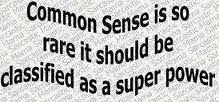
Autism 101
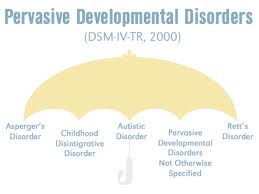
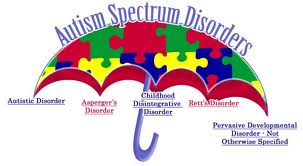

4 Main Controvery's Of Updated DSM-V
- Removing Asperger's Syndrome- Before the revision there are five categories of pervasive developmental disorders and Asperger's is one such category. In the revision Asperger's is removed and the categories are all put into one category of Autism Spectrum Disorders. Most of the controversy revolves around what level the confusion in the public is going to be, now that they will be classified Autistic. The worry among the "autistic" community is that it will give the wrong message that autism is less severe than it really is. Its a concern that since they are already fighting hard for the necessary services to be provided to the severity of the autism that isn't getting what it needs, that including Asperger's is now going to lessen those already existing programs.
- Excluding the intellectually disabled- To be classified under ASD there has to be social communication deficits and problems with social interactions. General developmental delay is not going to be "counted" as a qualifying disability for ASD. The overall feeling of the Autism community is that this is only a political move to further some agenda for the higher functioning autistic individuals. It also distorts the reality that a large proportion of autistic individuals do have intellectual disabilities (though please note that its also important to remember that you don't have to be intellectually disabled to have autism like they once thought years ago.)
- PDD-NOS (pervasive developmental disorder not otherwise specified) is removed- In a similar fashion as Asperger's; PDD-NOS will be pushed into the ASD category. Although, it might be moved into the new category of Social Communication Disorder. They main concern is they will lose the much needed services
- Severity Table- As already discussed, there are many things that are a concern for the new severity table. (Myself I don't understand how they plan on implementing that because you have to clearly define every word, behavior etc. so that there is only one interpretation and one meaning so it can be measurable.) How are they going to apply this consistently and meaningfully? The mis-use or misapplication of this scale could have disastrous consequences-
Responses to Controversy of Update
Many have said their piece when it comes to this whole issue, including those that are on the outside of the Autism community.
A blog called Autism Jabberwocky: News to Aspie's, You Already Have Autism depicts an opposite view than the one we have heard through main stream media. The issue brought to attention is the classic Autism title and community is "bringing under their wing" the other arm of their disorder. As this blog depicts, they wouldn't let their autistic brother be thrown under the bus. So why are the Asperger community throwing up their arms in rage over being identified with Autism. He is correct when he states that Asperger's IS a form of Autism - - it technically is. It is like pointing out and screaming "we don't want to be associated with THEM". I wouldn't got that far but it is an interesting debate.
Hypocrites is what the blog states the Asperger community now looks like. He notes another way to look at this change (and why I chose to include mention of the blog) because really he is right when he says the change of the title of what they are is really minor. Under the current criteria and structure, they all are under the Pervasive Developmental Disorder umbrella. Under the new structure they are under Autism Spectrum Disorders (which lets be honest-is what they have been classified as for years already). They are doing away with individual labels and in a sense that might help the ASD community with the public understanding. They will now see that these disorders are all under the same disorder and have similar and different characteristics instead of assuming one or the other isn't autism. It is a form of autism and has been and will be.
http://autismjabberwocky.blogspot.com/2010/02/note-to-angry-aspies-you-already-have.html
Let me add that I think another fact that is not clear is that Pervasive Developmental Disorders is really Neurodevelopmental Disorders.
Another point I want to make clear in my own analysis of this issue; is that what they are trying to do for Autism is make it clear cut that there is a social communication and interaction domain that HAS to be present in order to be autism. It is NOT saying that those that are showing other symptoms and have intellectual disability's aren't going to be classified under a more accurate label; as they have added a few sub-domain's in the criteria and added these disorders to cover those that would lose the title of ASD. This is a good thing on their part and is showing they aren't out to make you lose your services but to better refine and define what each is instead of there being confusion and misrepresentations of the disorders involved. Asperger's got less services and qualified for less, than did autistic individuals before the revision. How it looks now is they are on equal footing and able to be eligible for the services they were denied access to before.
"There is no explicit desire to move anyone in to or out of specific diagnostic groups, however, by creating more specificity we believe that people may be given diagnoses that better capture their individual conditions. The qualifier above about general developmental delays ensures that the social communication deficits are more specific, and also potentially allows for earlier diagnosis if appropriate.
Just as typically developing infants and toddlers are able to engage in very rich social communication and interaction across contexts, appropriate to their developmental level, so too most individuals with intellectual delays or disabilities are also able to communicate. On the other hand, significant deficits in social communication in toddlers may suggest the presence of autism. What the criterion above is meant to ensure is that clinicians take into account what is typical in terms of social communication abilities at a given age or developmental level, and not assume, for example, that a lack of social perception in a teenager with intellectual disability not automatically suggest the presence of autism. As is currently the case, some individuals with Down Syndrome may also meet criteria for autism; but most will not."
I have GLAD that they are removing intellectual disabilities that aren't socially delayed because that gave MY son a stigma when he was diagnosed. It was a main reason he WASN'T diagnosed, because he wasn't delayed intellectually. Thing is he was socially. He didn't get diagnosed until age six and only than because the Army was looking puzzled as to what the civilian world was doing; because the child didn't have to be intellectually impaired at all. So all this does is make it more clear and separate the two which should be the case since when you are intellectually impaired you aren't necessarily autistic. Its not removing the ones that have the social communication eligibility; its removing the ones that shouldn't have been there in the first place. Come on, this isn't some secret government I want to screw you and your child conspiracy.
Italy feels the way I do; here is a quote that was given in the conclusion of results of a study done in Italy. ID is intellectual disability and it states that they should have a new and separate identity in diagnosis categories.
CONCLUSIONS: The study confirms the relationship between ID and autism and suggests a new approach in the study of ID in order to elaborate a new integrated model for people with ID."
Autism and Intellectual Disability in the DSM5: My Submission to the DSM5 Neurodevelopmental Disorders Work Group
Addressing the PDD-NOS concern and controversy; I don't understand why this statement that there will be no more pdd-nos is freaking people out. I don't think that reading comprehension skills are where they should be because here is a quote for you that will say what I would:
It isn’t that people with diagnoses of Asperger or PDD-NOS will no longer will no longer be recognized as having a diagnosis. It is just that the diagnosis name will be replaced with Autism Spectrum Disorder.
If you want to compare the 4th edition and 5th edition side by side in criteria to see for yourself go to leftbrainrightbrain.com and they do the lovely job of doing what the media should have done throughout reporting the issue because I don't think that there is an understanding that no one is being kicked off or not allowed on the ASD spectrum.
To separate the PDD and Asperger's isn't necessary today; to also add that Asperger's (before it was separated into its own entity) was considered high-functioning Autism and that really is kind of what it is. High functioning kids have progressed to being re-diagnosed with Asperger's. Its a milder form of the disorder that actually these kids can hope to "blend in and function" as everyone else in society does.
There also (and I dont' think may are aware of this fact) was an age 3 years old criteria. We now know that children can be diagnosed as young as 18-months. When symptoms were starting to present before the age of three and the kids were getting diagnosed before the age limit specified there was an uproar than too. Looking at where we are now, that was a necessary and very crucial change seeing as early intervention is really key with treating ASD.
Concluding this article, I am going to say we need to look back and recap a few things.
- Asperger's and PDD-NOS are changing their last name to ASD and ARE NOT going to be thrown under the bus.
- NEWLY ADDED DISORDRS are implemented in order to compensate for not qulifying under ASD, BUT WILL THEN QUALIFY under another disorder. It can't possibly be all in one name.
- Severity Scales are introduced and will TAKE TIME to show how consistent it will now be in diagnosis and interpretation of symptoms BUT will have some fallout in the meantime.
- Asperger's used to be high functioning autism, and IS a milder form of Autism- Sorry to break the news- you are also autistic in a milder form and are being brought home to the mother's bird nest so she can take you under her wing and nurture you.
If your child is already diagnosed you will not be re-diagnosed and sent packing.
If you have a child that legitimately has an ASD disorder and hasn't been diagnosed, and you know this because they fit the criteria and have the symptoms what are you worried about? Fact is the ones that I would think would be in uproar are the ones that won't get the diagnosis and services are the ones that know that they shouldn't and are upset you can't take advantage of the system anymore.
I was in uproar to don't get me wrong. I had nightmares of he government taking away my child's autism card because I didn't know what I would do if he didn't qualify. After getting all of the information, I don't think that way anymore and I support the revisions and say its about time the government and the psychological community got the ball rolling to take care of Autism and figure out how best to combat some problems.
Ladies and Gents, do you know how happy I would be if my son was able to qualify out of Autism and into a new category of lesser extreme in severity like Social Communication Disorder???? I would be thrilled because that means I did my job and I worked my butt off and he accomplished things they said he never would. He would be one step closer to being what he wants to be and that is normal, to shed the Autism label. Its not that we aren't proud to be and autism family because we are damn proud and we have learned things and experienced things with our son we wouldn't have otherwise. But let's be realistic. Shed the label you have more of the world opened up to you. My son wasn't to be in the Army and fight bad guys and change the world like his father did; I don't have the heart to tell him he can't and why. If he would shed the label and pick up one that doesn't have a stigma do you see his dreams would come true???
Lets stop the conspiracy theory stuff and lets concentrate on making progress and moving forward. I am going to follow this and I am going to do the next hub on the Social Communication Disorder and I am going to pay attention to comments and your information and your concerns and address them because this is all not understood and part of that is it IS medical and psychiatric terminology and its based on scientific and empirical findings and research that there isn't a knowledge of commonly. I have studied this stuff that relates to it I know what to look for and I interpret what I find based on validity and eligibility . I don't take what the Times says, I take what the researcher stated in his published article about his experiments and research that backs up what is being done. I look to see if thee is proven cause and effect or just cor relational evidence.
Please take a moment and do more research if you don't think you made a well educated opinion. Don't feak out...I am also going to consult with my developmental psychologist professor who did graduate work with infants as well as with autistic children who can definitely explain the DSM to me in more detail.
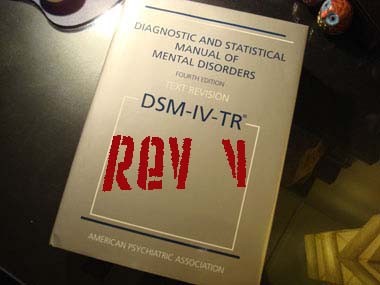
Update: American Psychiatric Association Approves the Revised 5th Addition of the DSM
On December 1, 2012 Autism Speaks reported that the APA voted to accept the revision done on the diagnostic criteria for Autism Spectrum Disorders for the DSM's 5th edition that will be published in Spring of 2013.
The final revision that was accepted will have two fundamentally different changes.
1. It will collapse the previous ASD subtypes which includes Autism and Aspergers, basically combining them as Aspergers IS a form of Autism.Instead of having the umbrella they had before of the five different (or so) diagnosis'; they will have just one...ASD (Autism Spectrum Disorder)
2. The 3 symptom domains that are in the current version of the DSM (social impairment, communication deficit and repetitive/restrictive behaviors (that have been the landmark of Autism) will now be just two...social communication impairment and repetitive/restrictive behaviors.
Comparison's of the old and new version of the DSM
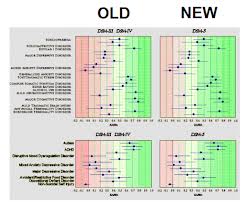
What Is the Implications?
The changes were made with support of scientific reasoning but it will definitely impact how ASD is diagnosed, can affect access to services, and the only thing that really worried me and it will affect is the prevalence rate of ASD. For these reasons Autism Speaks closely monitored the committee in charge of the revisions. They have communicated back and forth with Autism Speaks requesting that no one will be denied services that truly need them.
Autism Speaks has said they have "cautious" optimism as they move forward with the new criteria.
They stated more information is still needed to see how it will affect many ethnic backgrounds. Autism Speaks will be funding a study that will compare the 4th and 5th editions of the DSM in a large ethnically-diverse "community based" sample of kids in South Carolina. The results will be compared with another studies results done in South Korea.
Even though the changes will take affect it is reported that no one that currently has any diagnosed that fell under the "umbrella" will be able to get the ASD diagnosis. If your child currently has a diagnosis that can't be taken away from them.

